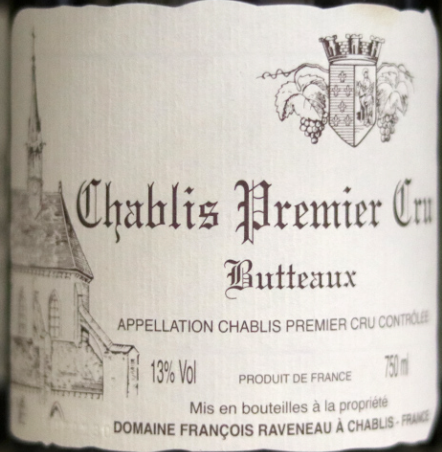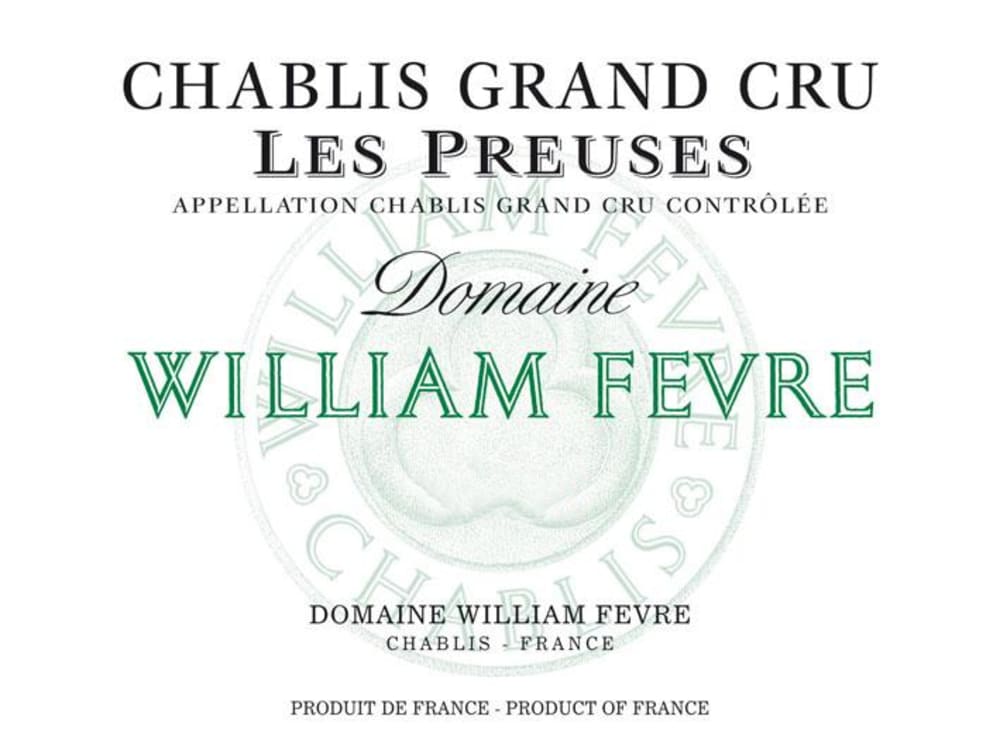Why These 5 Chablis Producers Are So Important
When it comes to Chablis, there are a few producers that stand out.
This blog post will look at five essential Chablis producers and what makes them so unique. Whether you're a sommelier or a wine lover, you'll definitely want to check out this list!
Let me briefly describe the Chablis region before we get into the specifics. We all know that Chablis is a significant wine region; you can find its wines on any wine list. There are many excellent producers in this area, but I'd like to focus only on five that I had the opportunity to work with and learn about during my sommelier career.
I'll give you some simple, understandable information so you can explain these five Chablis producers to your work colleagues or guests.
And thanks to the AI that will teach us how to pronounce the French names of wine producers and wine terms.
Let's get started
Domaine François Raveneau
Domaine Raveneau is thought to be Chablis's best estate. The Domaine makes small amounts of wine from the best vineyards in the village.
Francois Raveneau and his wife founded the Domaine in 1948. Francois Raveneau's unique style and exceptional craftsmanship established this estate's fame.
The Domaine owns three Grand Cru vineyards: Blanchot, Les Clos, and Valmur, and several Premier Crus: Montée de Tonnerre, Les Vaillons, Butteaux, Chapelot, Mont-Mains, and Forêt.
Key Points
• Domaine Raveneau is thought to be Chablis's best estate.
• The Domaine makes small amounts of wine from the best vineyards in the village.
• The Domaine owns three Grand Cru vineyards: Blanchot, Les Clos, and Valmur, and several Premier Crus: Montée de Tonnerre, Les Vaillons, Butteaux, Chapelot, Mont-Mains, and Forêt.
• Francois Raveneau and his wife founded the Domaine in 1948.
• Francois Raveneau's unique style and exceptional craftsmanship established this estate's fame.
Upload any wine bottle picture to get instant information about your wine with Wine AI.
Domaine René et Vincent Dauvissat
Robert Dauvissat founded it in the 1920s, but his son René made it famous. Vincent started working alongside his father in 1976 and has run the Domaine for 5 years.
11 hectares of vines include two Grands Crus and three Premiers Crus. Yields are closely managed, and winemaking and aging take time and care. Grapes are fermented in stainless tanks before being transferred to brand-new oak barrels. As a result, Chablis' clean, powerful wines are unusual.
Purchase this wine from Parcelle Wine Shop online and have it shipped from New York.
Their two Grands Crus, "Les Clos" (1.70 Ha) and "Les Preuses" (1 Ha), are significant, mineral-notes wines that need at least 8 years in the cellar to reach their full potential. Dauvissat also owns multiple vineyard parcels in prestigious 1er Cru wine regions like La Forest (requires a minimum of five years in oak), Séchet, Vaillons, and, as of 2013, Montée de Tonnerre.
The Dauvissat regular Chablis comes from a vineyard parcel next to the 1er Cru "La Forest." This makes it the rarest and most sought-after Chablis in the world.
Ask Wine AI about any wine producer to get clear information instantly.
Key Points
•René et Vincent Dauvissat one of the Chablis' best producer.
• Robert Dauvissat founded it in the 1920s, but his son René made it famous.
• 11 hectares of vines include two Grands Crus and three Premiers Crus. Yields are closely managed, and winemaking and aging take time and care. Grapes are fermented in stainless tanks for a year before being transferred to brand-new wood barrels. As a result, Chablis' clean, powerful wines are unusual."
Domaine William Fèvre
The estate officially began in 1959 when William Fèvre announced his first harvest. With more than 250 years of family history in the Chablis vineyard, he has every right to start as a winegrower with the 7 family hectares.
The estate has grown with new plots throughout the years, consistently on historical terroirs. With a prestigious vineyard of 78 hectares, of which 15.9 are rated as Premier Cru and 15.2 as Grand Cru, he became one of the largest vineyard owners in Chablis.
The Chablis terroirs are passionately expressed by Domaine William Fèvre while respecting traditions and the ecosystem. The team works year-round with the same rigor and accuracy of motions to attain greatness despite the differences in each climate.
The estate officially began in 1959 when William Fèvre announced his first harvest.
Key Points
• With more than 250 years of family history in the Chablis vineyard, he has every right to start as a winegrower with the 7 family hectares.
• The estate has grown with new plots throughout the years, consistently on historical terroirs.
• With a prestigious vineyard of 78 hectares, of which 15.9 are rated as Premier Cru and 15.2 as Grand Cru, he became one of the largest vineyard owners in Chablis.
Louis Michel
The Michel family has been producing wine since the 19th century in Chablis.
The ability to be exceptional is established from generation to generation. Guillaume Michel takes great pleasure in maintaining the family-run nature of Louis Michel & Fils.
The Domaine wines are Chablis Grand Cru, Premier Cru, Chablis, and Petit Chablis.
The Domaine produces three Grand Crus and seven Premier Crus.
In the 11th century, Cistercian monks planted the first vines at Domaine. As a result, 12 different wines are produced by Louis Michel.
Grand Cru: Vaudésir, Les Clos, and Grenouilles.
Prem'ier Cru: Vaillons, Séchets, Fourchaume, Montmain, Forêts, Butteaux, Butteaux "Vieilles Vignes," Butteaux, and Montée de Tonnerre
Key Point
•The Michel family has been producing wine in Chablis since the 19th century.
• Guillaume Michel takes great pleasure in maintaining the family-run nature of Louis Michel & Fils.
• The Louis Michel & Fils wines are classified as Chablis Grand Cru, Premier Cru, Chablis, and Petit Chablis.
• In the 11th century, Cistercian monks planted the first vines at Domaine. As a result, Louis Michel produced 12 wines, including Vaudésir, Les Clos, and Grenouilles.
• Vaillons, Séchets, Fourchaume, Montmain, Forêts, Butteaux "Vieilles Vignes," Butteaux and Montée de Tonnerre are also produced by Louis Michel.
Patrick Piuze
Canadian Patrick Piuze was born in 1973. His middle-class family has never made wine.
18-year-old Patrick met Marc Chapoutier. This helped Patrick start making wine.
He helped Patrick to work in Australia, South Africa, and Israel wineries. Then, he returned to Quebec and opened "Le Pinot Noir" in Montreal.
His two years of catering and wine service helped him create a wine-tasting culture there, but he wanted to return to his favorite wineries and cellars.
Patrick left Montreal in 2000 for Burgundy, one of France's most beautiful regions. He joined Olivier Leflaive in Puligny-Montrachet during harvest. After a short course at the Beaune Center for Professional and Agricultural Promotion, he made Chablis for Olivier Leflaive.
He learned good skills there. Then, he left Olivier Leflaive's winery for La Maison Verget, where Jean-Marie Guffens taught him land care.
Patrick Piuze became a famous winemaker. Because he was well-known, Jean-Marc Brocard hired him as a cellar master the following year.
On July 1, 2008, Patrick opened his own winery. His independence was difficult.
Patrick differentiates "wine grower" and "winemaker." As a wine grower's advisor, he has a lot of power. He built long-term trust with wine growers.
Patrick makes eight village-level wines that are based on the land. He thinks they are just as good as his 1er Crus, and he's right. Patrick is a winemaking encyclopedia when it comes to terroir. Patrick said at his winery that Chablis has hills and valleys. The vineyards on the top plateaus are 1er Cru, while the vineyards facing north are village-level Chablis. On the left bank of the Serein are the towns of Courgis, Chichée, Forêts, Butteaux, and Vaillons. The vineyards on the right bank, like Fleys and Fyé, Vaucoupin, Montée de Tonnerre, and Fourchaume, have less clay and more limestone. Right-bank wines are drier and have more minerals in them.
I'm glad you found this blog post about Chablis wineries informative. We're also planning on releasing an ebook that defines 50 different white producers. You can sign up for our form if you want to be kept up to date on the progress of our upcoming ebook.






